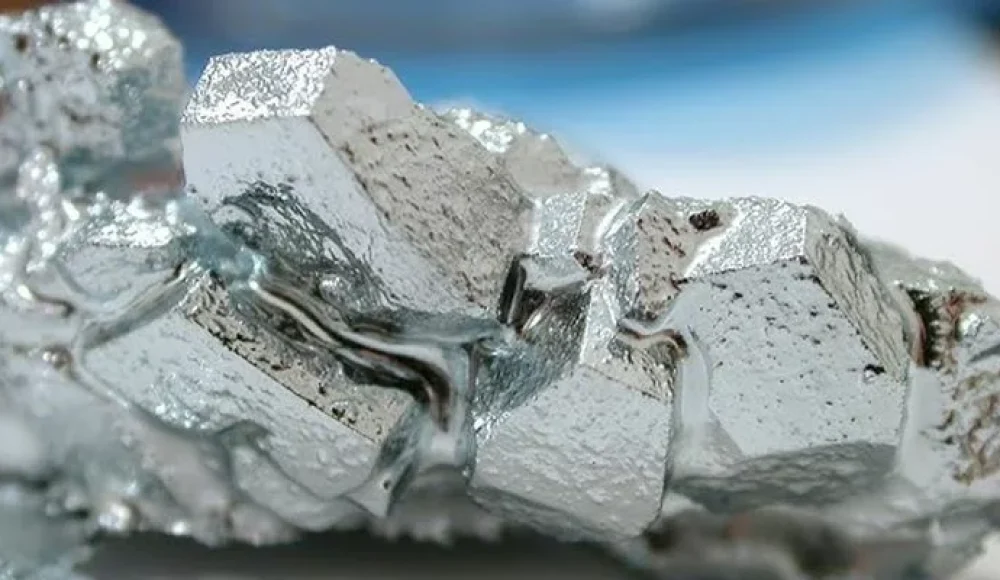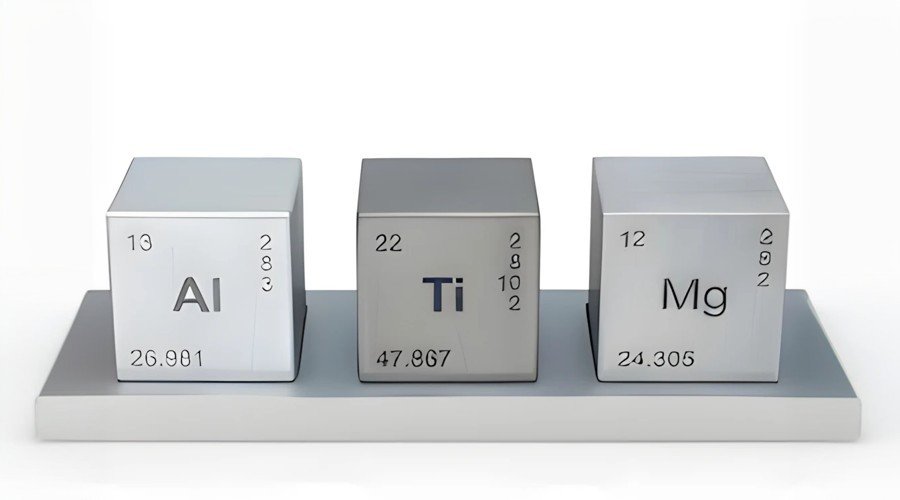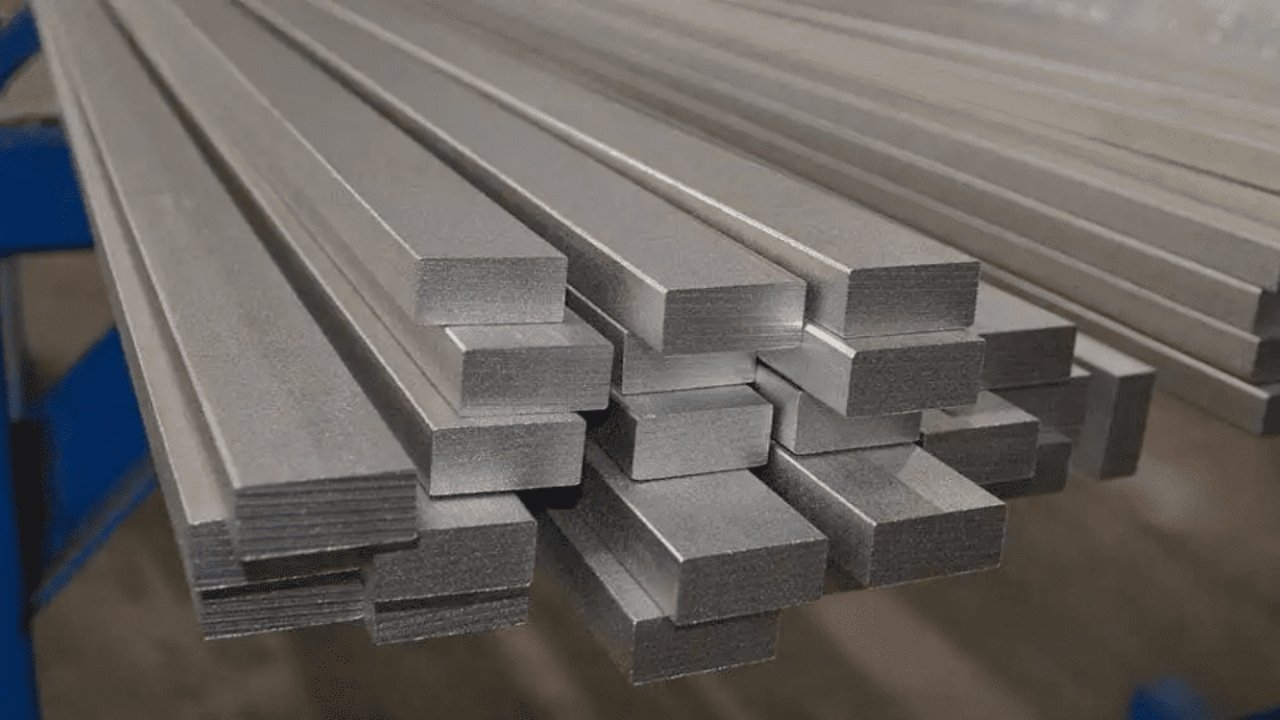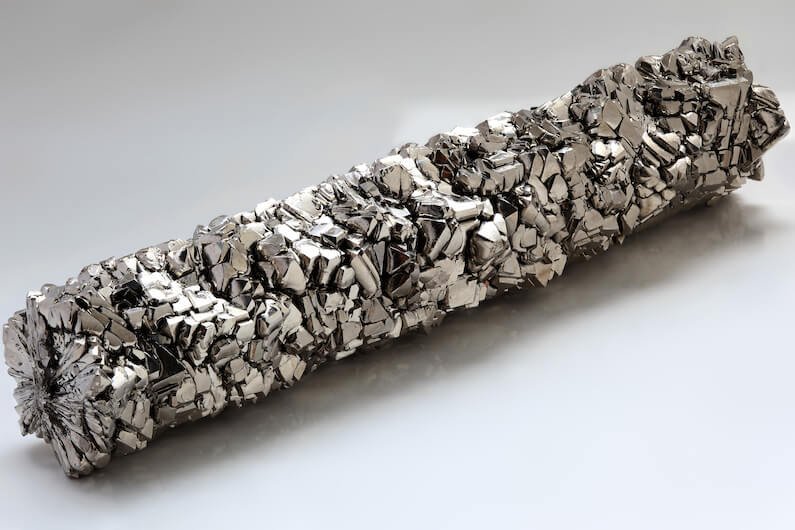Dans le monde de la fabrication rapide d'aujourd'hui, la demande de matériaux résistants sans excès de poids est plus élevée que jamais. Les métaux légers sont à l’avant-garde de cette tendance, permettant de concevoir des produits plus économes en carburant, soucieux de l'énergie, et plus facile à fabriquer. Des composants aérospatiaux à l’électronique grand public, ces matériaux façonnent la façon dont les ingénieurs et les fabricants envisagent la conception des produits.
Ce guide explore ce que sont les métaux légers, leurs différents types, Avantages clés, défis, et applications industrielles.
Quels sont les différents types de métaux légers?
Les métaux légers sont généralement définis comme des métaux ayant faible densité mais suffisant force, durabilité, et la résistance pour servir dans des environnements exigeants. Vous trouverez ci-dessous les options les plus utilisées.
1. Aluminium et ses alliages
Densité: ~2,7 g/cm³ (environ un tiers de celui de l'acier).
Propriétés clés: Résistance élevée à la corrosion, excellente machinabilité, conductivité thermique et électrique.
Alliages:
6061 aluminium (magnésium + silicium) → fort, ductile, résistant à la corrosion.
7075 aluminium (à base de zinc) → très fort, souvent utilisé dans l'aérospatiale et la défense.
Méthodes de fabrication: Fonderie, extrusion, roulement, et l'usinage.
Applications: Fuselages d'avions, pièces automobiles, échangeurs de chaleur, canettes de boissons, et matériaux de construction.
Pourquoi l'aluminium?
Il offre un excellent équilibre entre le coût, réduction du poids, et polyvalence. Il est également hautement recyclable, ce qui le rend à la fois économique et durable.
2. Alliages de magnésium
Densité: ~1,7 à 1,8 g/cm³ (le métal de construction le plus léger).
Propriétés clés: Très faible densité, force modérée, excellent amortissement des vibrations, machinabilité élevée.
Limites:
Peut se corroder s’il n’est pas protégé.
Produit des copeaux et de la poussière combustibles pendant l'usinage, exigeant des contrôles de sécurité minutieux.
Applications:
Automobile → blocs moteurs, boîtiers de transmission, roues.
Biens de consommation → ordinateurs portables, caméras, cadres de vélos, produits de sport.
Pourquoi le magnésium?
C'est le métal de construction le plus léger, ce qui le rend idéal là où une réduction de poids extrême est nécessaire. Cependant, des revêtements ou alliages supplémentaires sont souvent nécessaires pour améliorer sa résistance à la corrosion et sa durabilité.
3. Titane et ses alliages
Densité: ~4,5 g/cm³ (plus lourd que l'aluminium, mais beaucoup plus fort).
Propriétés clés:
Résistance exceptionnelle à la corrosion (notamment dans les environnements marins et chimiques).
Rapport résistance/poids élevé.
Excellentes performances à températures élevées (conserve sa résistance jusqu'à ~550 °C).
Défis:
Difficile et coûteux à usiner en raison de la dureté et de la faible conductivité thermique.
Coût élevé des matières premières.
Applications:
Aéronautique → moteurs à réaction, train d'atterrissage, cellules.
Médical → implants, instruments chirurgicaux.
Structures marine → offshore, composants de navire.
Pourquoi le titane?
Bien que plus lourd que l'aluminium, La résistance supérieure du titane et sa résistance à la corrosion en font un choix de premier ordre pour les applications critiques., applications hautes performances où la sécurité et la durabilité sont essentielles.
Comparaison des métaux légers
| Propriété / Fonctionnalité | Aluminium | Magnésium | Titane |
| Densité (g/cm³) | ~2,7 | ~1,7-1,8 | ~4,5 |
| Poids relatif | Moyen (plus léger que l'acier) | Métal de construction le plus léger | Plus lourd que l'aluminium, plus léger que l'acier |
| Rapport résistance/poids | Bien | Modéré | Excellent |
| Résistance à la corrosion | Haut (surtout avec les revêtements) | Faible à modéré (a besoin de protection) | Très élevé (notamment dans les environnements marins et chimiques) |
| Usinabilité | Bien, mais a besoin d'un refroidissement pour la conductivité thermique | Facile à usiner, mais la poussière est inflammable | Difficile, nécessite des outils spéciaux et un refroidissement |
| Conductivité thermique | Haut | Modéré | Faible |
| Recyclabilité | Excellent | Bien | Limité (le recyclage est énergivore) |
| Coût (Relatif) | Faible (économique) | Modéré à élevé | Haut (plus cher) |
| Applications courantes | Automobile, aérospatial, construction, électronique | Pièces automobiles, équipement sportif, boîtiers électroniques | Aérospatial, implants médicaux, marin, défense |
| Avantage clé | Économique et polyvalent | Poids le plus léger | Métal léger le plus solide et le plus durable |
Pourquoi choisir des métaux légers pour vos projets?
Les métaux légers ne servent pas seulement à réduire le poids; ils offrent un large éventail d'avantages fonctionnels.
Résistance à la corrosion
Exemple: Le titane résiste à la corrosion de l'eau de mer, le rendant indispensable dans le génie maritime.
Durabilité et robustesse
Malgré son faible poids, les métaux comme le magnésium et le titane peuvent résister à de lourdes charges et à des conditions de service difficiles.
Rapport résistance/poids élevé
Cette propriété permet aux concepteurs de réduire la masse tout en conservant, voire en améliorant la résistance..
Dans la conception automobile, les métaux plus légers réduisent la consommation de carburant et les émissions.
Recyclabilité
L'aluminium et le magnésium peuvent être recyclés avec une perte minimale de propriétés, soutenir la fabrication circulaire et réduire l’empreinte environnementale.
Propriétés thermiques
L'aluminium a une excellente conductivité thermique → utile dans les échangeurs de chaleur et le refroidissement des appareils électroniques.
Une faible dilatation thermique aide à maintenir la stabilité dimensionnelle dans les applications à haute température.
Considérations importantes lors de la sélection de métaux légers
Le choix du bon métal léger dépend de plusieurs facteurs:
Propriétés mécaniques et thermiques
Aluminium → bonne usinabilité, haute conductivité.
Magnésium → extrêmement léger, mais nécessite des revêtements de protection.
Titane → le plus solide et le plus durable, idéal pour les environnements soumis à des contraintes élevées et à des températures élevées.
Durabilité et impact environnemental
Tenez compte de la recyclabilité et de l’empreinte carbone.
Le magnésium et l'aluminium sont hautement recyclables; la production du titane est gourmande en énergie.
Contraintes budgétaires
Aluminium est généralement le choix le plus rentable.
Magnésium est léger mais plus coûteux à traiter en toute sécurité.
Titane est le plus cher mais offre des performances inégalées dans les applications spécialisées.
Exigences de candidature
Aéronautique → privilégier la solidité et la résistance à la fatigue (titane, aluminium à haute résistance).
Automobile → équilibre entre coût et réduction de poids (aluminium, magnésium).
Electronique → légère et conductrice (aluminium, alliages de magnésium).
Défis liés à l'utilisation de métaux légers
Alors que les métaux légers offrent des avantages évidents, les constructeurs doivent relever plusieurs défis:
Déchets de matériaux: Sans usinage de précision, des rebuts excessifs peuvent faire grimper les coûts.
Difficulté d'usinage:
Le titane nécessite des outils et des systèmes de refroidissement spéciaux.
L'usinage du magnésium doit tenir compte des risques d'incendie.
L'aluminium nécessite une gestion thermique en raison de sa conductivité élevée.
Coûts élevés des matières premières: Les alliages de titane et de magnésium peuvent augmenter considérablement les budgets globaux des projets.
Besoins de traitement spéciaux: Revêtements, traitements thermiques, et les couches de protection ajoutent de la complexité et des coûts.
Applications des métaux légers
Les métaux légers sont indispensables dans toutes les industries:
Aérospatial: Fuselages d'avions, train d'atterrissage, pièces de moteur à réaction.
Automobile: Panneaux de carrosserie, roues, composants du moteur pour améliorer le rendement énergétique.
Médical: Implants chirurgicaux, prothèses, et dispositifs médicaux.
Équipement sportif: Raquettes, vélos, casque, équipement de performance.
Electronique grand public & 3Produits C: Ordinateurs portables, téléphones intelligents, caméras, et trépieds.
Construction: Cadres de fenêtre, murs-rideaux, matériaux de toiture.
Électrique & Énergie: Lignes de transmission (aluminium), boîtiers de batterie, cadres solaires.
Marin: Plateformes pétrolières offshore, pièces de navire, composants résistants à la corrosion.
L'avenir des matériaux légers
L’avenir s’annonce très prometteur pour les métaux et matériaux légers. Comme des industries comme l'aérospatiale, automobile, et l'électronique continue de croître, la pression pour un briquet, plus fort, et les matériaux plus respectueux de l'environnement n'en seront que plus résistants.
Nous constatons déjà de grands changements:
Voitures électriques besoin de cadres et de boîtiers de batterie légers pour aller plus loin avec une seule charge.
Avions utilisent de l'aluminium plus avancé, magnésium, et alliages de titane pour économiser du carburant et réduire les émissions.
Électronique grand public comme les smartphones et les ordinateurs portables deviennent plus fins et plus légers sans perdre en résistance, grâce à de nouvelles conceptions de matériaux.
Une autre tendance passionnante est la montée en puissance de matériaux composites (mélanges de métaux avec fibre de carbone, céramique, ou polymères). Ceux-ci offrent souvent des performances encore meilleures que les métaux seuls.
En plus, la technologie de recyclage s'améliore. À l'avenir, il sera plus facile et moins cher de réutiliser l'aluminium, magnésium, et même du titane. Cela signifie moins de déchets, réduire les coûts, et une production plus verte.
En termes simples, l'avenir des matériaux légers dépend:
Devenir plus léger (pour une meilleure efficacité).
Devenir plus fort (pour gérer des conditions difficiles).
Devenir plus vert (grâce au recyclage et à la production durable).
Donc, si vous concevez des voitures, avions, ou encore des dispositifs médicaux, les métaux et matériaux légers vont jouer un rôle énorme dans la fabrication de produits plus intelligents, plus rapide, et mieux pour la planète.
Conclusion
Les métaux légers sont au cœur de l’ingénierie moderne, offrant une combinaison de faible densité, force, et une durabilité qui les rend inestimables dans tous les secteurs. Si l'objectif est de réduire la consommation de carburant dans les transports, prolonger la durabilité dans les environnements difficiles, ou améliorer les performances des produits de consommation, les métaux légers offrent un avantage concurrentiel.
Le choix entre l'aluminium, magnésium, et le titane dépend de budget, exigences de performance, et objectifs de durabilité. Bien que des défis tels que des difficultés d'usinage et des coûts élevés existent, les avantages des métaux légers dépassent de loin leurs limites.
FAQ
- De quelle manière les métaux légers peuvent-ils affecter la conception de vos pièces ??
Ils permettent de réduire l’utilisation de matériaux, géométries plus complexes, et une flexibilité de conception améliorée, tout en préservant l'intégrité structurelle. - Ce qui est plus léger: aluminium ou titane?
L'aluminium est plus léger. Le titane est presque deux fois plus dense mais offre une résistance supérieure. - Quel métal léger est le moins cher et le plus léger pour la fabrication?
L'aluminium est le métal léger le plus abordable, tandis que le magnésium est le métal structurel le plus léger.
En savoir plus:
Lien vers notre Services d'usinage CNC
Conseils de conception pour le moulage sous pression
Forme de fraisage Essentials-notre guide pratique






